#arthur hoyt
Text

Arthur Hoyt and Rod La Rocque having tea in 'The Coming Of Amos' (1925)
14 notes
·
View notes
Text




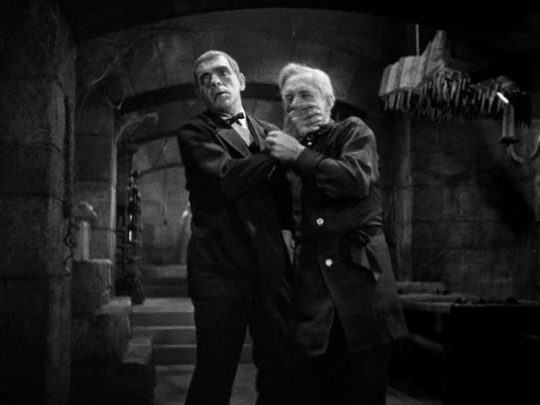


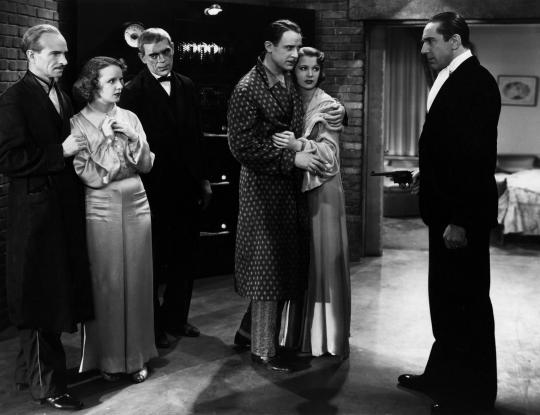

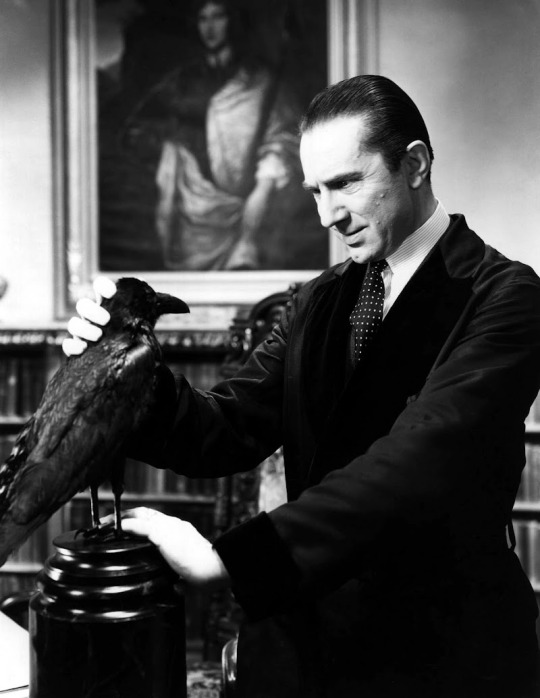
The Raven (1935)
"The raven is my talisman."
"Curious talisman. Bird of ill omen. A symbol of death."
"Death is my talisman, Mr. Chapman. The one indestructible force, the one certain thing in an uncertain universe - death."
#the raven#1935#horror film#american cinema#edgar allan poe#david boehm#guy endore#lew landers#bela lugosi#boris karloff#lester matthews#irene ware#samuel s. hinds#spencer charters#inez courtney#ian wolfe#maidel turner#arthur hoyt#cyril thornton#clifford vaughan#a wonderfully grotesque horror that marries gothic Poe tropes with the scientific nastiness that was then so in vogue#Karloff gets top billing despite the fact that Lugosi is the true lead‚ a reflection on the former's meteoric rise to stardom over the#previous few years. regardless of their place in the credits‚ both are on top form: Lugosi wonderfully intense in his obsessive hate‚#Karloff bringing complex morality as a tweaked version of his sympathetic monster role (monstrous in the eyes of the other characters and e#even himself‚ but human‚ coherent‚ natural; a variation on his contemporary monstrous appearances in the likes of The Mummy‚ The Ghoul‚#Frankenstein). his first appearance post transformation‚ in which the 'ordinary' visitors to Lugosi's home openly express their discomfort#at his presence and instruct him to stand apart‚ is deeply affecting. it makes you wonder how Karloff's own self image fared (the script#has him refer to his remarkable ugliness before Lugosi has done any of his evil doctoring). elsewhere this film features the requisite#comic scenes that this era apparently felt were essential to horror filmmaking (and which so rarely work) and a nauseating coda between the#romantic leads‚ but for the most part this is a solid golden age classic grounded by two horror masters at the height of their powers
20 notes
·
View notes
Text

Harry Houdini-Arthur Hoyt-Mae Busch "The grim game" 1919, de Irvin Willat.
5 notes
·
View notes
Text
The Lost World 1925

View On WordPress
#Arthur Hoyt#Leo White#Lewis Stone#Lloyd Hughes#Margaret McWade#Sir Arthur Conan Doyle#Wallace Beery
0 notes
Text
Here are 10 things you should know about Arthur Hoyt, born 151 years ago today.After a few years in stock theatre and on Broadway, he became one of Hollywood's most prolific character actors.
#Arthur Hoyt#character actors#silent movies#old movies#classic film#classic movies#classic Hollywood#Golden Age of Hollywood#precode#precode movies#classic Broadway#pre-code#pre-code movies
1 note
·
View note
Text
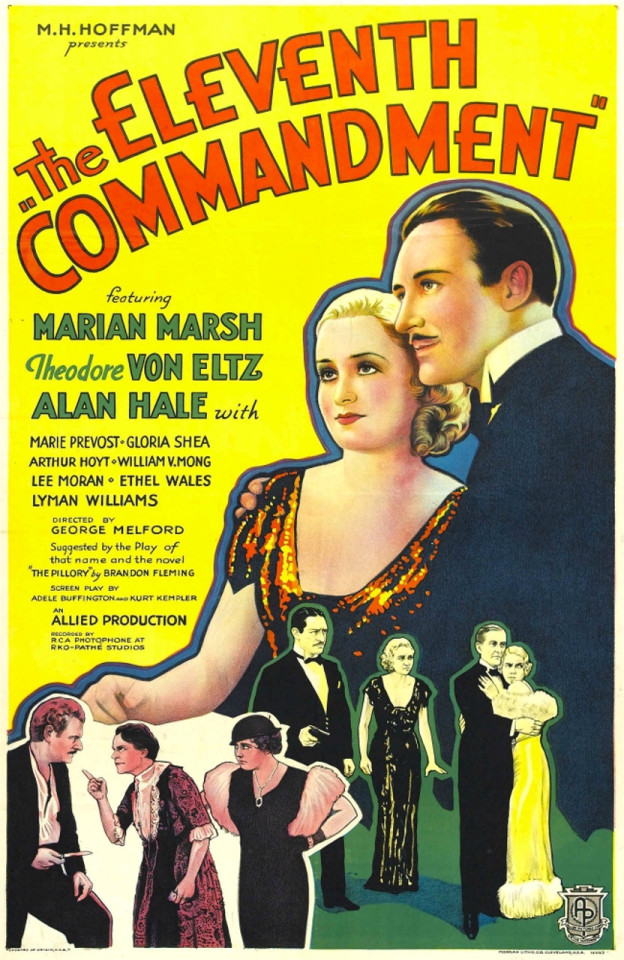
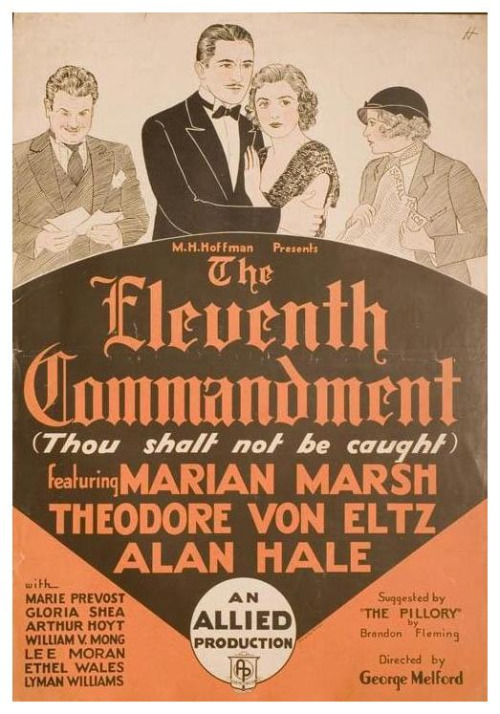
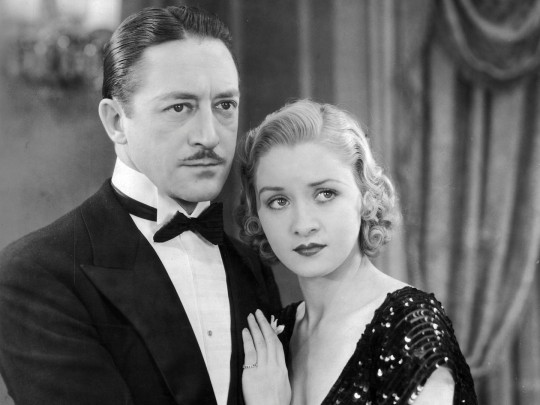
The Eleventh Commandment (1933) George Melford
December 2nd 2023
#the eleventh commandment#1933#george melford#marian marsh#theodore von eltz#marie prevost#alan hale#ethel wales#arthur hoyt#gloria shea#william v. mong#lee moran#pre-code
0 notes
Text

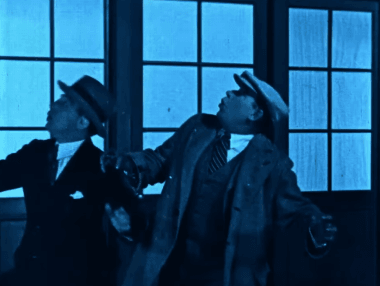


The Lost World (1925)
#the lost world gif#20s movies#stop motion animation#willis o'brien#silent movies#special effects#fantasy movies#dinosaurs#brontosaurus#harry o. hoyt#arthur conan doyle#1920s#1925#gif#chronoscaph gif
442 notes
·
View notes
Text
fuck it, daydreams of arthur with a lil kitty cat are over.
from now on, it's only daydreams of arthur with TWO kitty cats.
one snuggling on his chest when he's napping and the other snuggling on his lap.
both of them meowing at him for food incessently when he gets home from work.
on cold cold nights when his hands are freezing he never stops petting them to warm up his bones. one for each hand.
arthur cradling them in his arms while swaying around the living room in a little dance, late at night.
one of them crawling into his carnival bag that he brings to work, and he doesn't even realize it until he gets there. instead of leaving it under hoyt's and the guys' care (shudder), or taking it back home (there's no time), he just brings them along and makes them part of carnival's act. :3 bonus points if that day he's working a kid's birthday party or something, and the kids are so delighted they pay arthur extra.
arthur practicing all his best jokes out on his lil audience of two. <3
#joker 2019#arthur fleck#yearning#headcanons#on the second to last point- the kitten absolutely loves gary btw :) i think he'd be there when arthur discovers the stowaway#and helps hide it from hoyt
20 notes
·
View notes
Text
MASTERLIST
My AO3 Profile (there’s a lot of old cringey stuff there btw)
Stranger Things
Peter Ballard (Henry Creel/Vecna/001)
White Rabbit (x Fem!Reader) PART 1 , PART 2
Ptolemaea ( x Fem!Reader oneshot)
Peter Ballard and Child!Reader (requested, oneshot)
The Skin (x AFAB!Reader requested, oneshot)
Moon Knight
Jake Lockley
Release (x Fem!Reader oneshot)
Arthur Harrow
Knives Out (x Fem!Reader oneshot)
The Black Phone
The Grabber
Stop, Hammer Time (x AFAB!Reader oneshot)
Peter Pan 2003
Captain James Hook
Lady Disdain (x AFAB!Reader oneshot)
Arcane (League of Legends)
Silco
And I’ll Be Like Sugar (x AFAB!Reader oneshot)
Attack On Titan/Shingeki No Kyojin
Zeke Yeager
Cross The Line (x AFAB!Reader)
Far Cry 3
Hoyt Volker
Moon River (x Reader)
One Piece (Live Action)
Dracule Mihawk
Taking What’s Not Yours (x Reader)
Buggy The Clown
You Started It (x Reader) - Part 1. Part 2.
Mortal Kombat (games and movies)
Shang Tsung
Unpunishable (x F!Reader)
The Saw Franchise
Mark Hoffman
Enabler (x F!Reader)
Supernatural
Lucifer
Ring Of Fire (x F!Reader) - Part 1. Part 2.
Dune (Villeneuve movies)
Feyd Rautha Harkonnen
It’s A Special Death You Saved (x F!Reader) - Part 1. Part 2. Part 3. Part 4.(finale)
Strip Me Down And Paint Me Black (x F!Reader) - Part 1.
Fallout (Amazon TV Series)
Cooper Howard/The Ghoul
Hand That Feeds (x F!Reader) - Part 1. Part 2. Part 3.
Lost (2004 TV Series)
Benjamin Linus
The Secret of Drowning (x F!Reader) - AO3 link
#masterlist#my writing#peter ballard x reader#henry creel x reader#001 x reader#jake lockley x reader#arthur harrow x reader#stranger things x reader#moon knight x reader#captain hook x reader#silco x reader#zeke yeager x reader#hoyt volker x reader#buggy the clown x reader#dracule mihawk x reader#feyd rautha x reader#ben linus x reader#cooper howard x reader
106 notes
·
View notes
Video
youtube
SARCÓFAGO: O MUNDO PERDIDO (THE LOST WORLD, 1925) COMPLETO E LEGENDADO
#the lost world#1925 movie#complete movie#filmes completos#legendados#dinosaurs#dinosaur#lost world#Harry O. Hoyt#arthur conan doyle
1 note
·
View note
Text
That's one for the history books.....
...well, it would have been had Lily Gladstone won. But awards season is OVAH! The Oscars have been handed out. Here are 2024's Best Actor, Actress, Supporting Actress and Actor winners.
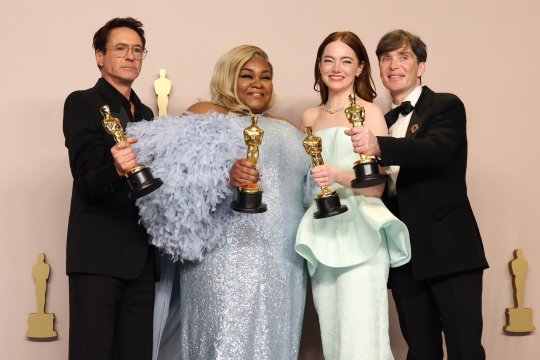
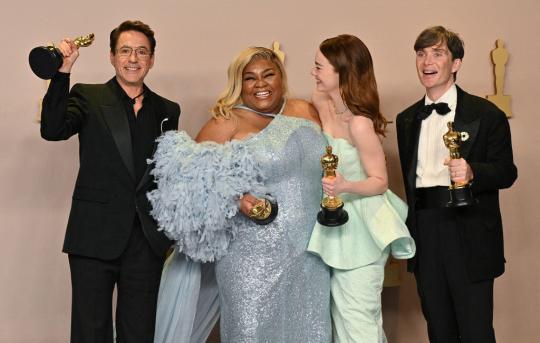
They have joined a great club.
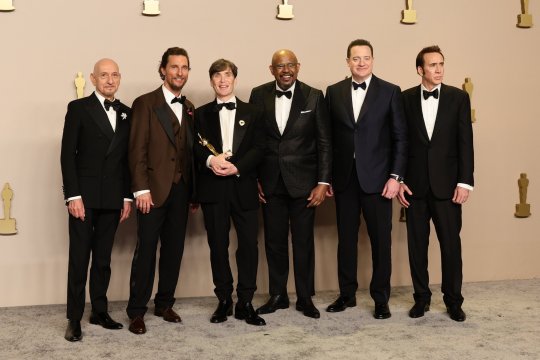
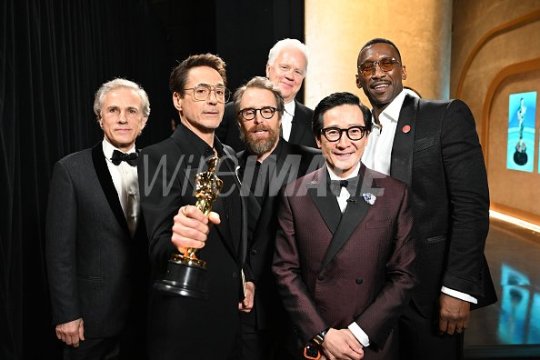

THEY ARE THE CHAMPIONS!
Best Picture
OPPENHEIMER
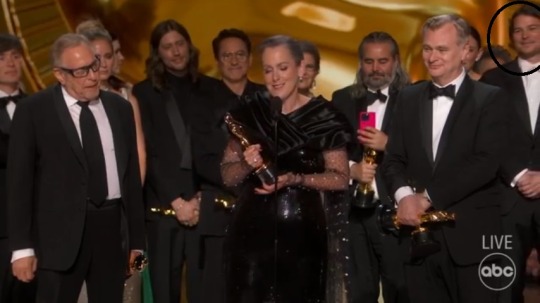
Best Directing
Christopher Nolan
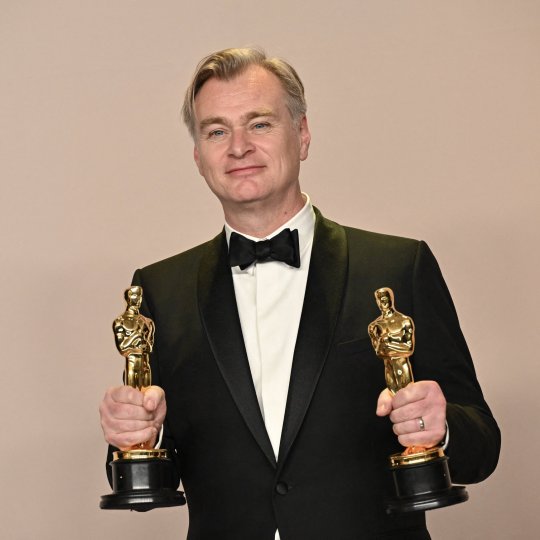
Best Actor in a Leading Role
Cillian Murphy


The elusive Malachy Murphy on hand.

Best Actress in a Leading Role
Emma Stone
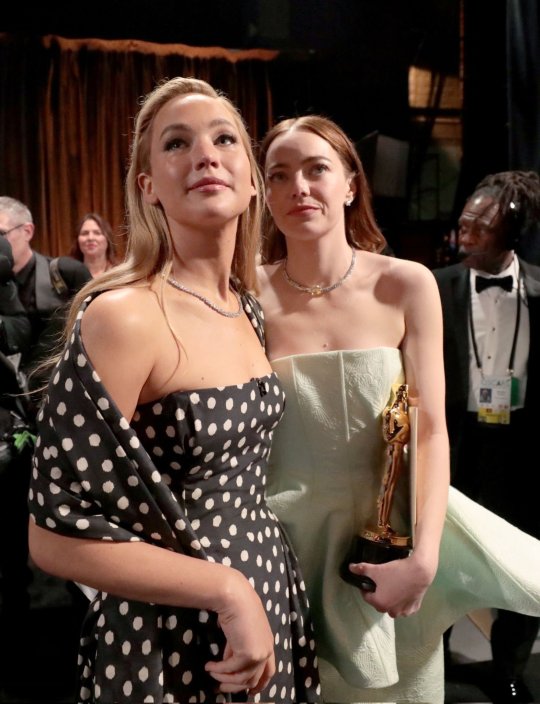
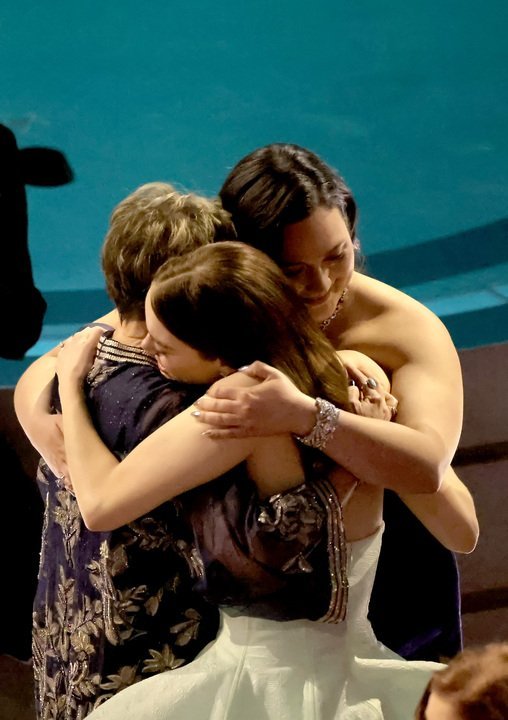
Best Actor in a Supporting Role
Robert Downey Jr.

Best Actress in a Supporting Role
Da’Vine Joy Randolph

*Issa Rae peeping in.
Best Writing (Adapted Screenplay)
American Fiction (Cord Jefferson)
Best Writing (Original Screenplay)
Anatomy of a Fall (Justine Triet and Arthur Harari)
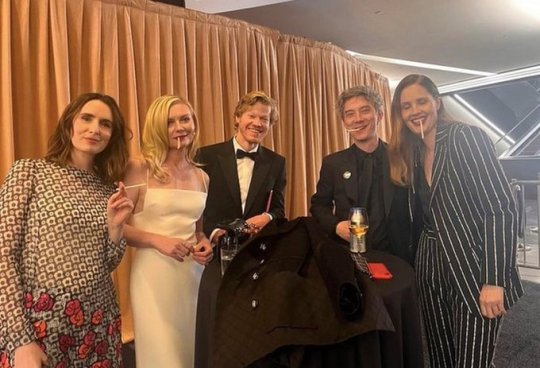

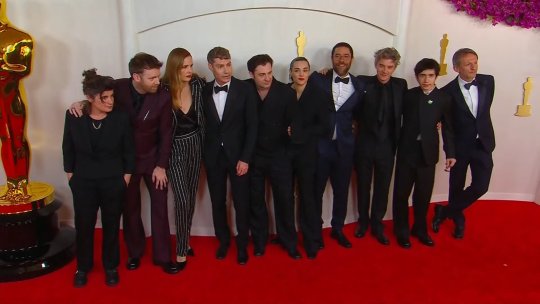
Best Animated Feature
The Boy and the Heron
Best Documentary Feature Film
20 Days in Mariupol
Best International Feature Film
The Zone of Interest
Best Animated Short Film
War Is Over! Inspired by the Music of John & Yoko
Best Live-Action Short Film
The Wonderful Story of Henry Sugar
Best Documentary Short Film
The Last Repair Shop

Best Cinematography
Oppenheimer (Hoyte van Hoytema)
Best Costume Design
Poor Things (Holly Waddington)
Best Makeup and Hairstyling
Poor Things (Nadia Stacey, Mark Coulier and Josh Weston)
Best Original Song
“What Was I Made For?” from Barbie (Music and Lyric by Billie Eilish and Finneas O’Connell)

Best Original Score
Oppenheimer (Ludwig Göransson)

Best Production Design
Poor Things
Best Film Editing
Oppenheimer (Jennifer Lame)
Best Sound
The Zone of Interest
Best Visual Effects
Godzilla: Minus One (Takashi Yamazaki, Kiyoko Shibuya, Masaki Takahashi and Tatsuji Nojima)

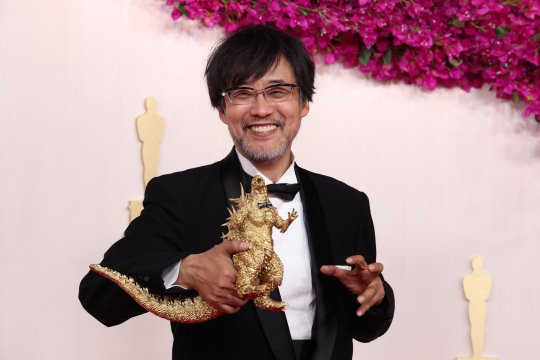
GODZILLA heels is extreme commitment to the bit.

#oscars#oscars 2024#oppenheimer#christopher nolan#da'vine joy randolph#emma stone#cillian murphy#robert downey jr#rdj#ludwig goransson#godzilla minus one#billie eilish#finneas#anatomy of a fall#justine triet#sandra hüller#swann arlaud#arthur harari
52 notes
·
View notes
Text
RDR Event Timeline (Canon + Headcanon)
This is the timeline I have constructed and use for all of my Red Dead writings. Canon event dates/ages are taken from the Red Dead Wiki, and headcanon estimations for more ambiguous events/characters are based on their approximate ages in-game by 1899 and what makes the most logical sense to me based on that timeline.
Please feel free to use this as a reference for your own works too, if it helps. (Canon events are noted as such, and my headcanons are labeled "HC.")
1839 - Uncle born (HC)
1844 - Hosea Matthews born (Canon)
1845 - Rains Fall born (HC)
1846 - Leopold Stauss born (HC)
1850 - Susan Grimshaw born (HC)
1853 - Orville Swanson born (HC)
1855 - Dutch Van der Linde born (Canon)
1857 - Josiah Trelawney born (HC)
1860 - Micah Bell III born (Canon) (newspaper clipping mentions Micah Bell Jr. robbing with his 17-year-old son in 1877)
1861 - Simon Pearson born (HC)
1863 - Arthur Morgan born (Canon)
1866 - Bill Williamson born (Canon)
1870 - Dutch leaves home aged 15 (Canon); Kieran Duffy born (HC)
1871 - Sadie Adler born (HC)
1872 - Charles Smith born (HC) (based on est. age of 27 in 1899)
1873 - John Marston born (Canon); Javier Escuella born (HC)
1874 - Lyle Morgan arrested and hanged, Arthur orphaned (Canon); Molly O'Shea born (HC)
1875 - Karen Jones born (HC)
1876 - Dutch and Hosea meet outside of Chicago, IL (Canon); Sean MacGuire born (HC)
1877 - Abigail Roberts born; Arthur joins the gang, aged 14 (Canon)
1878 - Eagle Flies born (HC)
1879 - Tilly Jackson and MaryBeth Gaskill born (HC)
1880 - Lenny Summers born (Canon)
1881 - John Marston's father dies, John orphaned (Canon)
1882- Annabelle and Bessie join the gang (HC)
1883 - Bessie and Hosea marry and leave the gang (Canon); Arthur meets and begins dating Mary Gillis (HC) (Jamie Gillis references both Annabelle and Bessie during the mission in Chapter 2, so IMO this would've been the most likely time for all 3 to have met one another.)
1884 - Dutch kills Colm O'Driscoll's unnamed brother, Annabelle killed by Colm in retaliation; Hosea returns to the gang (HC)
1885 - John Marston and Susan Grimshaw join the gang (Canon); Charles Smith leaves home, aged 13 (HC) (based on est. DOB 1872)
1886 - Arthur proposes to and subsequently breaks up with Mary in the springtime; Arthur meets Eliza (19) later in the year, and Isaac is conceived (HC)
1887 - Lee & Hoyt Bank Robbery, April (Canon); Isaac Morgan born (HC) (According to Arthur in-game, Eliza only knew who he was after she got pregnant. Based on this they most likely met in late 1886 or very early 1887, with the bank robbery in April '87 and Isaac born that autumn.)
1888 - Death of Bessie Matthews (HC) (based on the assumption that she passed some time before Arthur lost his son. Her cause of death is never specified in canon, but I HC it was a fairly quick battle with pneumonia over the winter.)
1891 - Isaac Morgan (4) and Eliza (23) killed in a home robbery (HC)
1892 - Bill Williamson dishonorably discharged from the U.S. Army (Canon); Uncle joins the gang (HC)
1893 - Bill Williamson joins the gang (Canon)
1894 - Abigail Roberts joins the gang, introduced to them by Uncle (Canon)
1895 - Jack Marston born; Javier joins the gang (Canon)
1896 - John Marston leaves the gang; Jake and Sadie Adler marry in September (Canon)
1897 - John Marston returns to the gang after a year (Canon)
1898 - Micah Bell, Charles Smith, Lenny Summers, and Jenny Kirk join the gang (Canon)
1899 - Blackwater Massacre; dissolving of the Van der Linde gang; deaths of Jenny Kirk, Mac and Davey Callender, Sean MacGuire, Kieran Duffy, Hosea Matthews, Lenny Summers, Molly O'Shea, Eagle Flies, Susan Grimshaw, and Arthur Morgan (Canon)
1907 - Construction of Beecher's Hope ranch; John and Abigail marry; death of Micah Bell III (Canon)
1911 - Kidnapping of Abigail and Jack Marston by the U.S. Government in exchange for John's cooperation; deaths of Bill Williamson, Javier Escuella, Dutch Van der Linde, Uncle, and John Marston (Canon)
1914 - Death of Abigail Marston; Jack Marston kills Edgar Ross to avenge his father's murder (Canon)
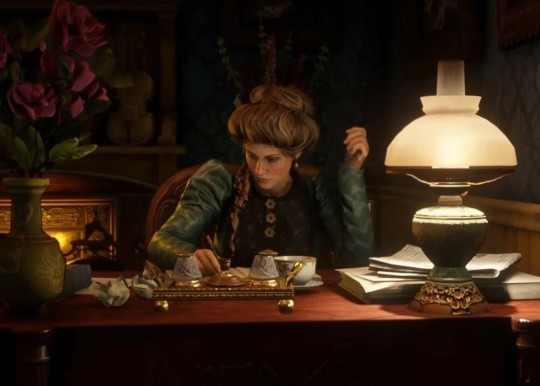
#rdr2#red dead redemption#red dead redemption 2#rdr#fanfiction#rdr fanfiction#rdr2 fanfiction#rdr fanfic#red dead redemption timeline#writing resources#canon compliant#heacanons#zanazirawrites
79 notes
·
View notes
Text
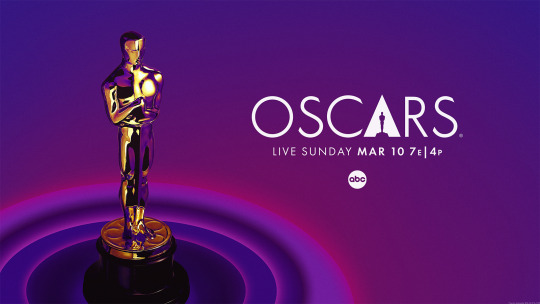
Oscars 2024 winners:
Best Picture – Oppenheimer
Best Actress in a Leading Role – Emma Stone, Poor Things
Best Directing – Christopher Nolan, Oppenheimer
Best Actor in a Leading Role – Cillian Murphy, Oppenheimer
Best Original Song – “What Was I Made For?” by Billie Eilish and Finneas O'Connell, Barbie
Best Original Score – Ludwig Göransson, Oppenheimer
Best Sound – Tarn Willers and Johnnie Burn, The Zone of Interest
Best Live Action Short Film – The Wonderful Story of Henry Sugar
Best Cinematography – Hoyte van Hoytema, Oppenheimer
Best Documentary Feature Film – 20 Days in Mariupol
Best Documentary Short Film – The Last Repair Shop
Best Film Editing – Jennifer Lame, Oppenheimer
Best Visual Effects – Takashi Yamazaki, Kiyoko Shibuya, Masaki Takahashi and Tatsuji Nojima, Godzilla Minus One
Best Actor in a Supporting Role – Robert Downey Jr., Oppenheimer
Best International Feature Film – The Zone of Interest (United Kingdom)
Best Costume Design – Holly Waddington, Poor Things
Best Production Design – Production Design: James Price and Shona Heath; Set Decoration: Zsuzsa Mihalek, Poor Things
Best Makeup and Hairstyling – Nadia Stacey, Mark Coulier and Josh Weston, Poor Things
Best Adapted Screenplay – Cord Jefferson, American Fiction
Best Original Screenplay – Justine Triet and Arthur Harari, Anatomy of a Fall
Best Animated Feature – The Boy and the Heron
Best Animated Short Film – War Is Over! Inspired by the Music of John & Yoko
Best Actress in a Supporting Role – Da'Vine Joy Randolph, The Holdovers
#Oscars 2024#Oscars#Oppenheimer#Poor Things#The Zone of Interest#American Fiction#Anatomy of a Fall#Barbie#The Boy and the Heron#Godzilla Minus One#The Holdovers#The Last Repair Shop#20 Days in Mariupol#War Is Over! Inspired by the Music of John and Yoko#The Wonderful Story of Henry Sugar#film#awards
42 notes
·
View notes
Text

Emma Stone accepts the Lead Actress award for “Poor Things”

Cillian Murphy accepts the Lead Actor award for “Oppenheimer”
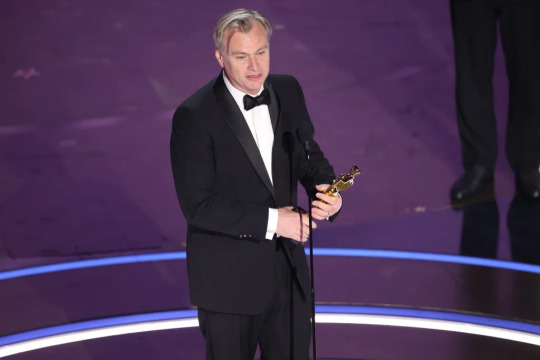
Christopher Nolan wins Best Director for Oppenheimer

Da’Vine Joy Randolph wins Best Supporting Actress for “The Holdovers”

Robert Downey Jr. accepts the Best Actor in a Supporting Role for “Oppenheimer”

(L-R) Brad Booker, Dave Mullins and Sean Lennon accept the Best Animated Short Film award for “War Is Over! Inspired by the Music of John and Yoko”

Arthur Harari and Justine Triet win Best Adapted Screenplay for “Anatomy of a Fall”

Cord Jefferson accepts the Best Adapted Screenplay award for “American Fiction”

Nadia Stacey accept the Best Makeup and Hairstyling award for “Poor Things” from Catherine O’Hara

James Price and Shona Heath win Best Production Design for “Poor Things”

Holly Waddington wins Best Costume Design for “Poor Things”

Jonathan Glazer accepts the Best International Feature Film award for “The Zone of Interest”

Masaki Takahashi, Takashi Yamazaki, Kiyoko Shibuya and Tatsuji Nojima win Best Visual Effects for “Godzilla Minus One”

Jennifer Lame wins Best Film Editing for ‘Oppenheimer’
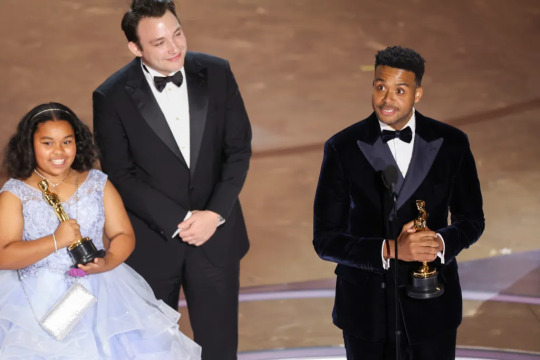
Dana Atkinson, Ben Proudfoot and Kris Bowers wins Best Documentary (Short Subject) for “The Last Repair Shop”

Tarn Willers and Johnnie Burn win Best Sound for “The Zone of Interest”
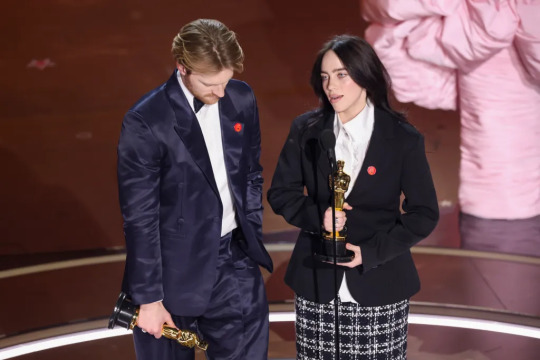
Finneas and Billie Eilish win Best Original Song for “What Was I Made For” from “Barbie”

Evgeniy Maloletka, Mstyslav Chernov and Michelle Mizner wins Best Documentary Feature for 20 Days in Mariupol
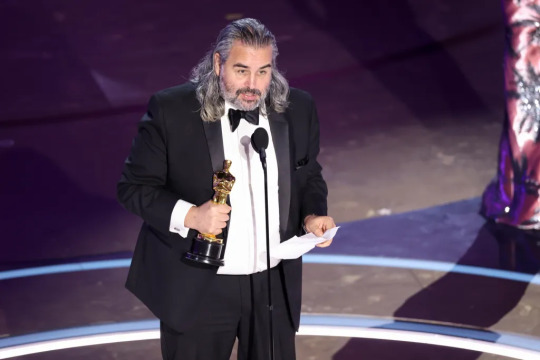
Hoyte van Hoytemawins Best Cinematography for “Oppenheimer”

Ludwig Göransson wins Best Original Score for “Oppenheimer”
26 notes
·
View notes
Text
(Mostly) Lost, but Not Forgotten: Omar Khayyam (1923) / A Lover’s Oath (1925)

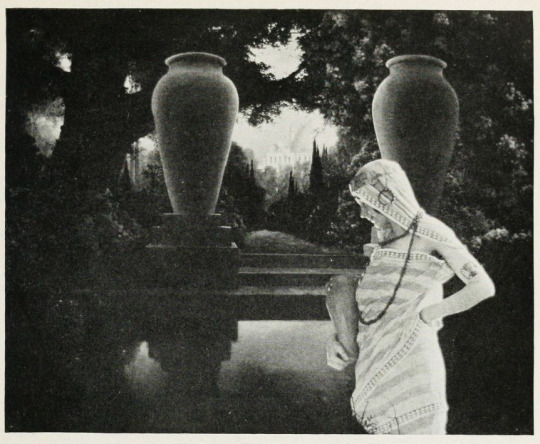
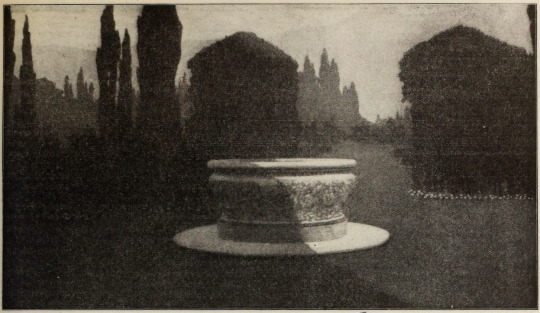
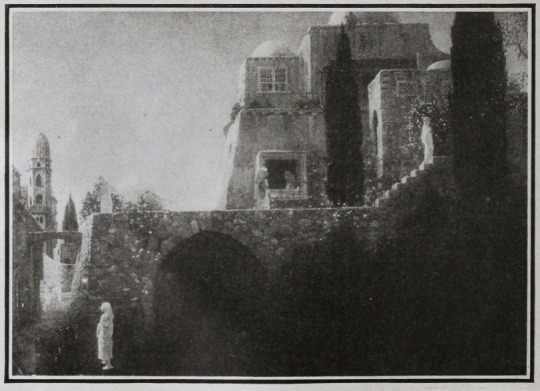
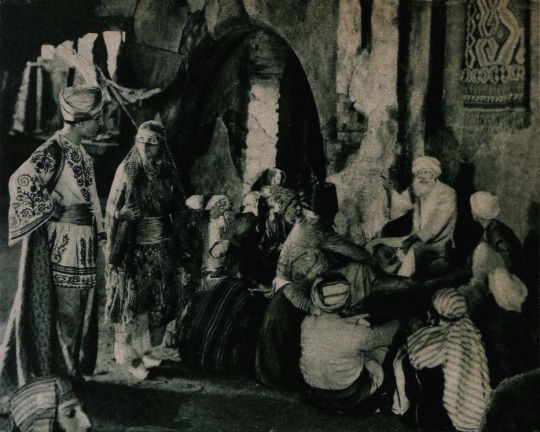
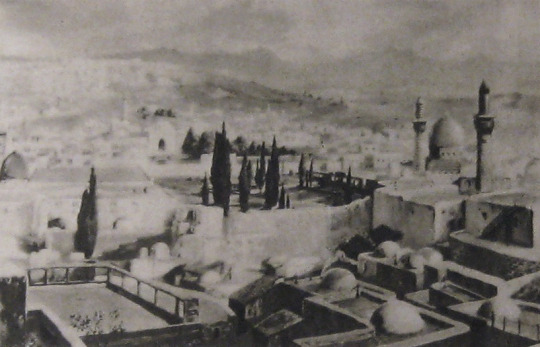

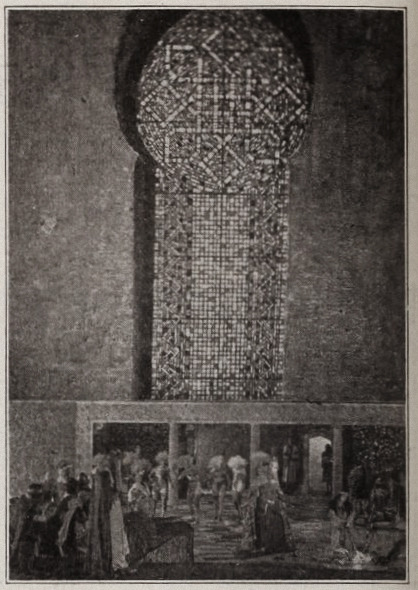
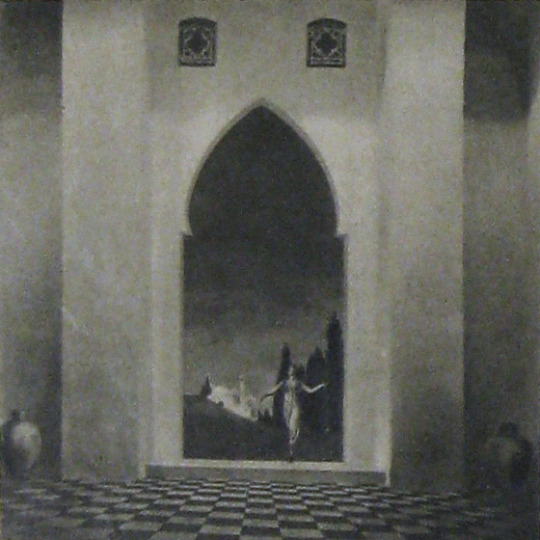


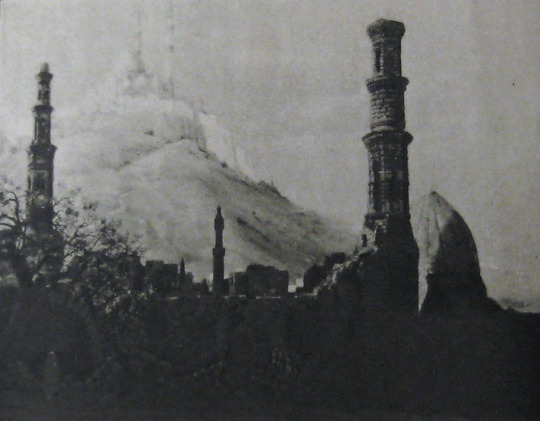
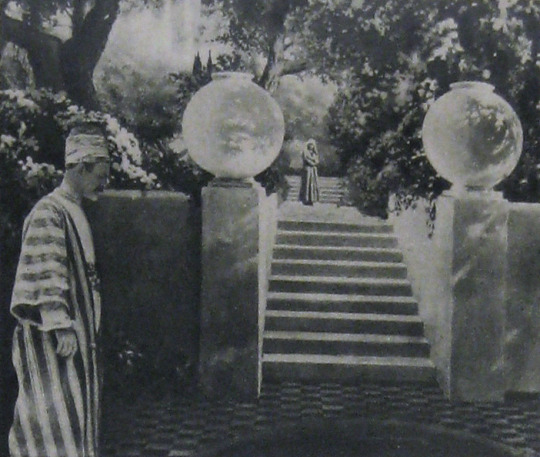
Alternate Titles: The Rubaiyat of Omar Khayyam, The Rubaiyat, Omar Khayyam, Omar
Direction: Ferdinand Pinney Earle; assisted by Walter Mayo
Scenario: Ferdinand P. Earle
Titles: Marion Ainslee, Ferdinand P. Earle (Omar), Louis Weadock (A Lover’s Oath)
Inspired by: The Rubaiyat of Omar Khayyam, as edited & translated by Edward FitzGerald
Production Manager: Winthrop Kelly
Camera: Georges Benoit
Still Photography: Edward S. Curtis
Special Photographic Effects: Ferdinand P. Earle, Gordon Bishop Pollock
Composer: Charles Wakefield Cadman
Editors: Arthur D. Ripley (The Rubaiyat of Omar Khayyam version), Ethel Davey & Ferdinand P. Earle (Omar / Omar Khayyam, the Director’s cut of 1922), Milton Sills (A Lover’s Oath)
Scenic Artists: Frank E. Berier, Xavier Muchado, Anthony Vecchio, Paul Detlefsen, Flora Smith, Jean Little Cyr, Robert Sterner, Ralph Willis
Character Designer: Louis Hels
Choreography: Ramon Novarro (credited as Ramon Samaniegos)
Technical Advisors: Prince Raphael Emmanuel, Reverend Allan Moore, Captain Dudley S. Corlette, & Captain Montlock or Mortlock
Studio: Ferdinand P. Earle Productions / The Rubaiyat, Inc. (Production) & Eastern Film Corporation (Distribution, Omar), Astor Distribution Corporation [States Rights market] (Distribution, A Lover’s Oath)
Performers: Frederick Warde, Edwin Stevens, Hedwiga Reicher, Mariska Aldrich, Paul Weigel, Robert Anderson, Arthur Carewe, Jesse Weldon, Snitz Edwards, Warren Rogers, Ramon Novarro (originally credited as Ramon Samaniegos), Big Jim Marcus, Kathleen Key, Charles A. Post, Phillippe de Lacy, Ferdinand Pinney Earle
Premiere(s): Omar cut: April 1922 The Ambassador Theatre, New York, NY (Preview Screening), 12 October 1923, Loew’s New York, New York, NY (Preview Screening), 2 February 1923, Hoyt’s Theatre, Sydney, Australia (Initial Release)
Status: Presumed lost, save for one 30 second fragment preserved by the Academy Film Archive, and a 2.5 minute fragment preserved by a private collector (Old Films & Stuff)
Length: Omar Khayyam: 8 reels , 76 minutes; A Lover’s Oath: 6 reels, 5,845 feet (though once listed with a runtime of 76 minutes, which doesn’t line up with the stated length of this cut)
Synopsis (synthesized from magazine summaries of the plot):
Omar Khayyam:
Set in 12th century Persia, the story begins with a preface in the youth of Omar Khayyam (Warde). Omar and his friends, Nizam (Weigel) and Hassan (Stevens), make a pact that whichever one of them becomes a success in life first will help out the others. In adulthood, Nizam has become a potentate and has given Omar a position so that he may continue his studies in mathematics and astronomy. Hassan, however, has grown into quite the villain. When he is expelled from the kingdom, he plots to kidnap Shireen (Key), the sheik’s daughter. Shireen is in love with Ali (Novarro). In the end it’s Hassan’s wife (Reicher) who slays the villain then kills herself.
A Lover’s Oath:
The daughter of a sheik, Shireen (Key), is in love with Ali (Novarro), the son of the ruler of a neighboring kingdom. Hassan covets Shireen and plots to kidnap her. Hassan is foiled by his wife. [The Sills’ edit places Ali and Shireen as protagonists, but there was little to no re-shooting done (absolutely none with Key or Novarro). So, most critics note how odd it is that all Ali does in the film is pitch woo, and does not save Shireen himself. This obviously wouldn’t have been an issue in the earlier cut, where Ali is a supporting character, often not even named in summaries and news items. Additional note: Post’s credit changes from “Vizier” to “Commander of the Faithful”]
Additional sequence(s) featured in the film (but I’m not sure where they fit in the continuity):
Celestial sequences featuring stars and planets moving through the cosmos
Angels spinning in a cyclone up to the heavens
A Potters’ shop sequence (relevant to a specific section of the poems)
Harem dance sequence choreographed by Novarro
Locations: palace gardens, street and marketplace scenes, ancient ruins


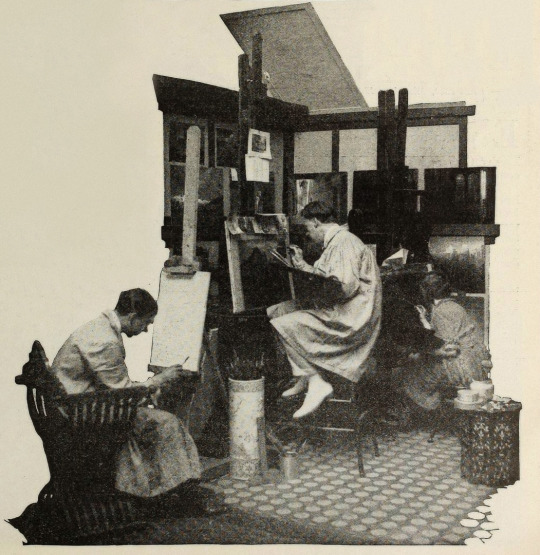


Points of Interest:
“The screen has been described as the last word in realism, but why confine it there? It can also be the last word in imaginative expression.”
Ferdinand P. Earle as quoted in Exhibitors Trade Review, 4 March 1922
The Rubaiyat of Omar Khayyam was a massive best seller. Ferdinand Pinney Earle was a classically trained artist who studied under William-Adolphe Bougueraeu and James McNeill Whistler in his youth. He also had years of experience creating art backgrounds, matte paintings, and art titles for films. Charles Wakefield Cadman was an accomplished composer of songs, operas, and operettas. Georges Benoit and Gordon Pollock were experienced photographic technicians. Edward S. Curtis was a widely renowned still photographer. Ramon Novarro was a name nobody knew yet—but they would soon enough.
When Earle chose The Rubaiyat as the source material for his directorial debut and collected such skilled collaborators, it seemed likely that the resulting film would be a landmark in the art of American cinema. Quite a few people who saw Earle’s Rubaiyat truly thought it would be:
William E. Wing writing for Camera, 9 September 1922, wrote:
“Mr. Earle…came from the world of brush and canvass, to spread his art upon the greater screen. He created a new Rubaiyat with such spiritual colors, that they swayed.”
…
“It has been my fortune to see some of the most wonderful sets that this Old Earth possesses, but I may truly say that none seized me more suddenly, or broke with greater, sudden inspiration upon the view and the brain, than some of Ferdinand Earle’s backgrounds, in his Rubaiyat.
“His vision and inspired art seem to promise something bigger and better for the future screen.”
As quoted in an ad in Film Year Book, 1923:
“Ferdinand Earle has set a new standard of production to live up to.”
Rex Ingram
“Fifty years ahead of the time.”
Marshall Neilan
The film was also listed among Fritz Lang’s Siegfried, Chaplin’s Gold Rush, Fairbanks’ Don Q, Lon Chaney’s Phantom of the Opera and The Unholy Three, and Erich Von Stroheim’s Merry Widow by the National Board of Review as an exceptional film of 1925.
So why don’t we all know about this film? (Spoiler: it’s not just because it’s lost!)
The short answer is that multiple dubious legal challenges arose that prevented Omar’s general release in the US. The long answer follows BELOW THE JUMP!
Earle began the project in earnest in 1919. Committing The Rubaiyat to film was an ambitious undertaking for a first-time director and Earle was striking out at a time when the American film industry was developing an inferiority complex about the level of artistry in their creative output. Earle was one of a number of artists in the film colony who were going independent of the emergent studio system for greater protections of their creative freedoms.
In their adaptation of The Rubaiyat of Omar Khayyam, Earle and Co. hoped to develop new and perfect existing techniques for incorporating live-action performers with paintings and expand the idea of what could be accomplished with photographic effects in filmmaking. The Rubaiyat was an inspired choice. It’s not a narrative, but a collection of poetry. This gave Earle the opportunity to intersperse fantastical, poetic sequences throughout a story set in the lifetime of Omar Khayyam, the credited writer of the poems. In addition to the fantastic, Earle’s team would recreate 12th century Persia for the screen.
Earle was convinced that if his methods were perfected, it wouldn’t matter when or where a scene was set, it would not just be possible but practical to put on film. For The Rubaiyat, the majority of shooting was done against black velvet and various matte photography and multiple exposure techniques were employed to bring a setting 800+ years in the past and 1000s of miles removed to life before a camera in a cottage in Los Angeles.
Note: If you’d like to learn a bit more about how these effects were executed at the time, see the first installment of How’d They Do That.
Unfortunately, the few surviving minutes don’t feature much of this special photography, but what does survive looks exquisite:

see all gifs here
Earle, knowing that traditional stills could not be taken while filming, brought in Edward S. Curtis. Curtis developed techniques in still photography to replicate the look of the photographic effects used for the film. So, even though the film hasn’t survived, we have some pretty great looking representations of some of the 1000s of missing feet of the film.
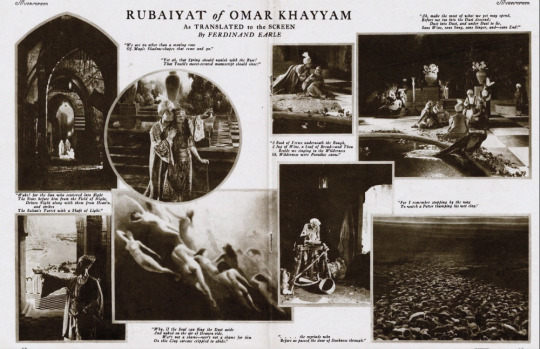
Nearly a year before Curtis joined the crew, Earle began collaboration with composer Charles Wakefield Cadman. In another bold creative move, Cadman and Earle worked closely before principal photography began so that the score could inform the construction and rhythm of the film and vice versa.
By the end of 1921 the film was complete. After roughly 9 months and the creation of over 500 paintings, The Rubaiyat was almost ready to meet its public. However, the investors in The Rubaiyat, Inc., the corporation formed by Earle to produce the film, objected to the ample reference to wine drinking (a comical objection if you’ve read the poems) and wanted the roles of the young lovers (played by as yet unknown Ramon Novarro and Kathleen Key) to be expanded. The dispute with Earle became so heated that the financiers absconded with the bulk of the film to New York. Earle filed suit against them in December to prevent them from screening their butchered and incomplete cut. Cadman supported Earle by withholding the use of his score for the film.
Later, Eastern Film Corp. brokered a settlement between the two parties, where Earle would get final cut of the film and Eastern would handle its release. Earle and Eastern agreed to change the title from The Rubaiyat of Omar Khayyam to simply Omar. Omar had its first official preview in New York City. It was tentatively announced that the film would have a wide release in the autumn.
However, before that autumn, director Norman Dawn launched a dubious patent-infringement suit against Earle and others. Dawn claimed that he owned the sole right to use multiple exposures, glass painting for single exposure, and other techniques that involved combining live action with paintings. All the cited techniques had been widespread in the film industry for a decade already and eventually and expectedly Dawn lost the suit. Despite Earle’s victory, the suit effectively put the kibosh on Omar’s release in the US.
Earle moved on to other projects that didn’t come to fruition, like a Theda Bara film and a frankly amazing sounding collaboration with Cadman to craft a silent-film opera of Faust. Omar did finally get a release, albeit only in Australia. Australian news outlets praised the film as highly as those few lucky attendees of the American preview screenings did. The narrative was described as not especially original, but that it was good enough in view of the film’s artistry and its imaginative “visual phenomena” and the precision of its technical achievement.
One reviewer for The Register, Adelaide, SA, wrote:
“It seems almost an impossibility to make a connected story out of the short verse of the Persian of old, yet the producer of this classic of the screen… has succeeded in providing an entertainment that would scarcely have been considered possible. From first to last the story grips with its very dramatic intensity.”
While Omar’s American release was still in limbo, “Ramon Samaniegos” made a huge impression in Rex Ingram’s Prisoner of Zenda (1922, extant) and Scaramouche (1923, extant) and took on a new name: Ramon Novarro. Excitement was mounting for Novarro’s next big role as the lead in the epic Ben-Hur (1925, extant) and the Omar project was re-vivified.

A new company, Astor Distribution Corp., was formed and purchased the distribution rights to Omar. Astor hired actor (note, not an editor) Milton Sills to re-cut the film to make Novarro and Key more prominent. The company also re-wrote the intertitles, reduced the films runtime by more than ten minutes, and renamed the film A Lover’s Oath. Earle had moved on by this point, vowing to never direct again. In fact, Earle was indirectly working with Novarro and Key again at the time, as an art director on Ben-Hur!
Despite Omar’s seemingly auspicious start in 1920, it was only released in the US on the states rights market as a cash-in on the success of one of its actors in a re-cut form five years later.
That said, A Lover’s Oath still received some good reviews from those who did manage to see it. Most of the negative criticism went to the story, intertitles, and Sills’ editing.
What kind of legacy could/should Omar have had? I’m obviously limited in my speculation by the fact that the film is lost, but there are a few key facts about the film’s production, release, and timing to consider.
The production budget was stated to be $174,735. That is equivalent to $3,246,994.83 in 2024 dollars. That is a lot of money, but since the production was years long and Omar was a period film set in a remote locale and features fantastical special effects sequences, it’s a modest budget. For contemporary perspective, Robin Hood (1922, extant) cost just under a million dollars to produce and Thief of Bagdad (1924, extant) cost over a million. For a film similarly steeped in spectacle to have nearly 1/10th of the budget is really very noteworthy. And, perhaps if the film had ever had a proper release in the US—in Earle’s intended form (that is to say, not the Sills cut)—Omar may have made as big of a splash as other epics.
It’s worth noting here however that there are a number of instances in contemporary trade and fan magazines where journalists off-handedly make this filmmaking experiment about undermining union workers. Essentially implying that that value of Earle’s method would be to continue production when unionized workers were striking. I’m sure that that would absolutely be a primary thought for studio heads, but it certainly wasn’t Earle’s motivation. Often when Earle talks about the method, he focuses on being able to film things that were previously impossible or impracticable to film. Driving down filming costs from Earle’s perspective was more about highlighting the artistry of his own specialty in lieu of other, more demanding and time-consuming approaches, like location shooting.
This divide between artists and studio decision makers is still at issue in the American film and television industry. Studio heads with billion dollar salaries constantly try to subvert unions of skilled professionals by pursuing (as yet) non-unionized labor. The technical developments of the past century have made Earle’s approach easier to implement. However, just because you don’t have to do quite as much math, or time an actor’s movements to a metronome, does not mean that filming a combination of painted/animated and live-action elements does not involve skilled labor.
VFX artists and animators are underappreciated and underpaid. In every new movie or TV show you watch there’s scads of VFX work done even in films/shows that have mundane, realistic settings. So, if you love a film or TV show, take the effort to appreciate the work of the humans who made it, even if their work was so good you didn’t notice it was done. And, if you’ve somehow read this far, and are so out of the loop about modern filmmaking, Disney’s “live-action” remakes are animated films, but they’ve just finagled ways to circumvent unions and low-key delegitimize the skilled labor of VFX artists and animators in the eyes of the viewing public. Don’t fall for it.
VFX workers in North America have a union under IATSE, but it’s still developing as a union and Marvel & Disney workers only voted to unionize in the autumn of 2023. The Animation Guild (TAG), also under the IATSE umbrella, has a longer history, but it’s been growing rapidly in the past year. A strike might be upcoming this year for TAG, so keep an eye out and remember to support striking workers and don’t cross picket lines, be they physical or digital!
Speaking of artistry over cost-cutting, I began this post with a mention that in the early 1920s, the American film industry was developing an inferiority complex in regard to its own artistry. This was in comparison to the European industries, Germany’s being the largest at the time. It’s frustrating to look back at this period and see acceptance of the opinion that American filmmakers weren’t bringing art to film. While yes, the emergent studio system was highly capitalistic and commercial, that does not mean the American industry was devoid of home-grown artists.
United Artists was formed in 1919 by Douglas Fairbanks, Charlie Chaplin, Mary Pickford, and D.W. Griffith precisely because studios were holding them back from investing in their art—within the same year that Earle began his Omar project. While salaries and unforgiving production schedules were also paramount concerns in the filmmakers going independent, a primary impetus was that production/distribution heads exhibited too much control over what the artists were trying to create.
Fairbanks was quickly expanding his repertoire in a more classical and fantastic direction. Cecil B. DeMille made his first in a long and very successful string of ancient epics. And the foreign-born children of the American film industry, Charlie Chaplin, Rex Ingram, and Nazimova, were poppin’ off! Chaplin was redefining comedic filmmaking. Ingram was redefining epics. Nazimova independently produced what is often regarded as America’s first art film, Salome (1923, extant), a film designed by Natacha Rambova, who was *gasp* American. Earle and his brother, William, had ambitious artistic visions of what could be done in the American industry and they also had to self-produce to get their work done.
Meanwhile, studio heads, instead of investing in the artists they already had contracts with, tried to poach talent from Europe with mixed success (in this period, see: Ernst Lubitsch, F.W. Murnau, Benjamin Christensen, Mauritz Stiller, Victor Sjöström, and so on). I’m in no way saying it was the wrong call to sign these artists, but all of these filmmakers, even if they found success in America, had stories of being hired to inject the style and artistry that they developed in Europe into American cinema, and then had their plans shot down or cut down to a shadow of their creative vision. Even Stiller, who tragically died before he had the opportunity to establish himself in the US, faced this on his first American film, The Temptress (1926, extant), on which he was replaced. Essentially, the studio heads’ actions were all hot air and spite for the filmmakers who’d gone independent.

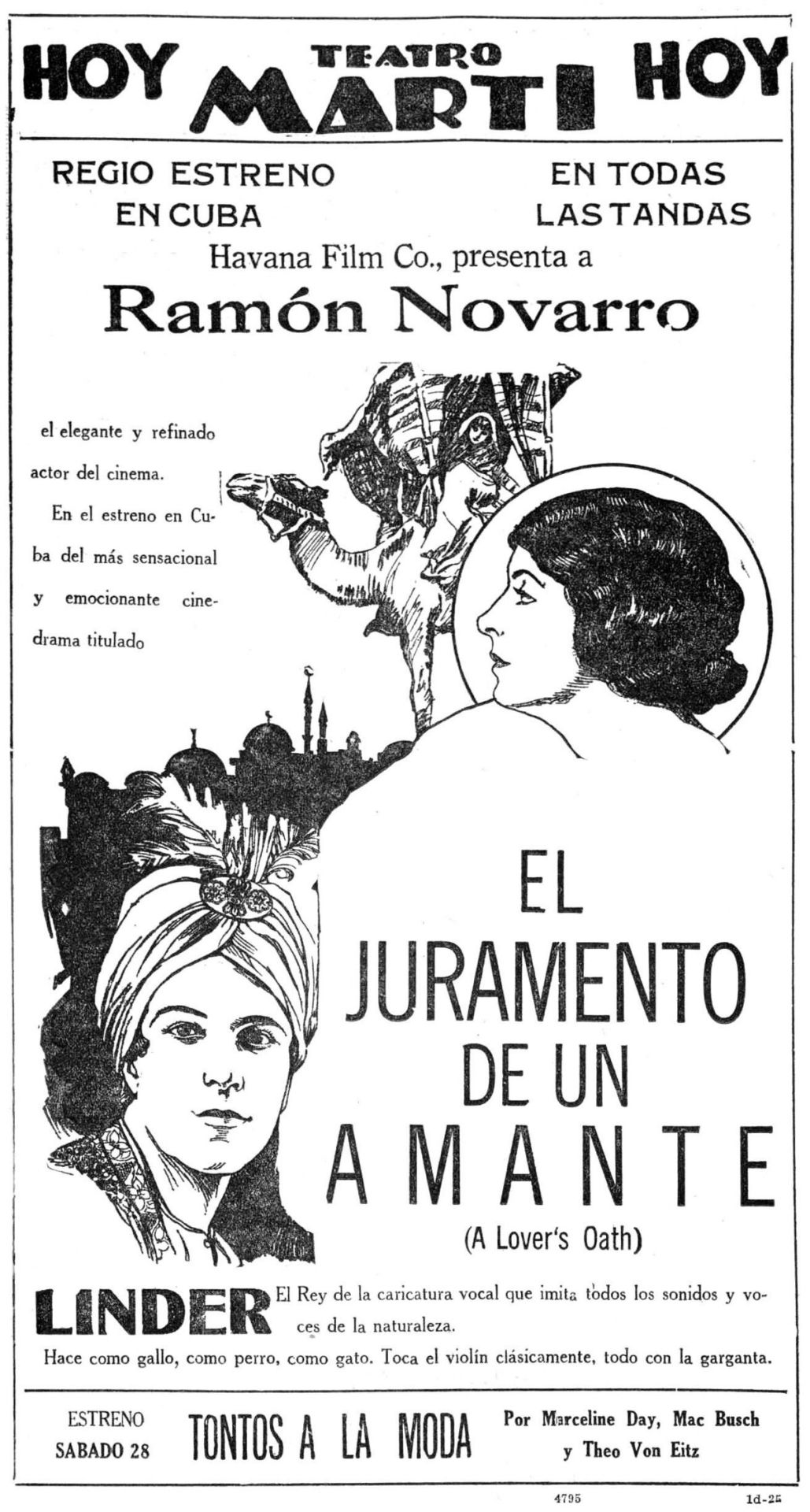
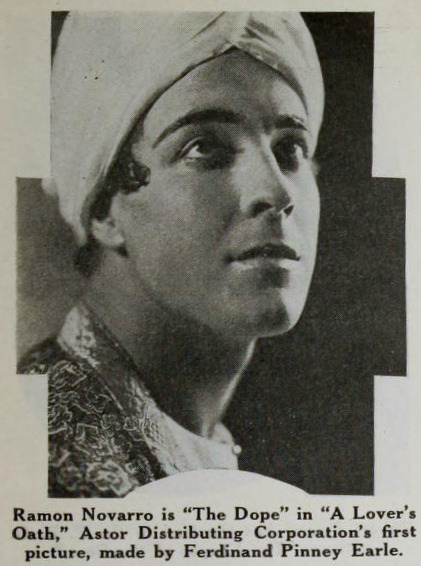
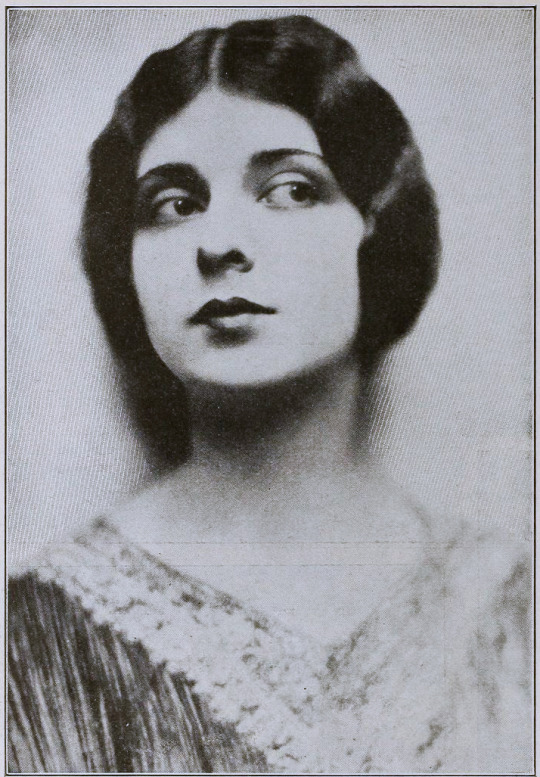
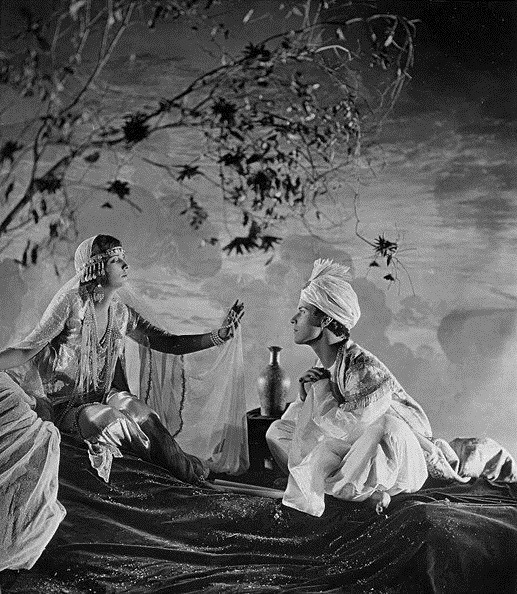
Finally I would like to highlight Ferdinand Earle’s statement to the industry, which he penned for from Camera in 14 January 1922, when his financial backers kidnapped his film to re-edit it on their terms:
MAGNA CHARTA
Until screen authors and producers obtain a charter specifying and guaranteeing their privileges and rights, the great slaughter of unprotected motion picture dramas will go merrily on.
Some of us who are half artists and half fighters and who are ready to expend ninety per cent of our energy in order to win the freedom to devote the remaining ten per cent to creative work on the screen, manage to bring to birth a piteous, half-starved art progeny.
The creative artist today labors without the stimulus of a public eager for his product, labors without the artistic momentum that fires the artist’s imagination and spurs his efforts as in any great art era.
Nowadays the taint of commercialism infects the seven arts, and the art pioneer meets with constant petty worries and handicaps.
Only once in a blue moon, in this matter-of-fact, dollar-wise age can the believer in better pictures hope to participate in a truely [sic] artistic treat.
In the seven years I have devoted to the screen, I have witnessed many splendid photodramas ruined by intruding upstarts and stubborn imbeciles. And I determined not to launch the production of my Opus No. 1 until I had adequately protected myself against all the usual evils of the way, especially as I was to make an entirely new type of picture.
In order that my film verison [sic] of the Rubaiyat of Omar Khayyam might be produced under ideal conditions and safeguarded from intolerable interferences and outside worries, I entered into a contract with the Rubaiyat, Inc., that made me not only president of the corporation and on the board of directors, but which set forth that I was to be author, production manager, director, cutter and film editor as well as art director, and that no charge could be made against the production without my written consent, and that my word was to be final on all matters of production. The late George Loane Tucker helped my attorney word the contract, which read like a splendid document.
Alas, I am now told that only by keeping title to a production until it is declared by yourself to be completed is it safe for a scenario writer, an actor or a director, who is supposedly making his own productions, to contract with a corporation; otherwise he is merely the servant of that corporation, subject at any moment to discharge, with the dubious redress of a suit for damages that can with difficulty be estimated and proven.
Can there be any hope of better pictures as long as contracts and copyrights are no protection against financial brigands and bullies?
We have scarcely emerged from barbarism, for contracts, solemnly drawn up between human beings, in which the purposes are set forth in the King’s plainest English, serve only as hurdles over which justice-mocking financiers and their nimble attorneys travel with impunity, riding rough shod over the author or artist who cannot support a legal army to defend his rights. The phrase is passed about that no contract is invioliable [sic]—and yet we think we have reached a state of civilization!
The suit begun by my attorneys in the federal courts to prevent the present hashed and incomplete version of my story from being released and exhibited, may be of interest to screen writers. For the whole struggle revolves not in the slightest degree around the sanctity of the contract, but centers around the federal copyright of my story which I never transferred in writing otherwise, and which is being brazenly ignored.
Imagine my production without pictorial titles: and imagine “The Rubaiyat” with a spoken title as follows, “That bird is getting to talk too much!”—beside some of the immortal quatrains of Fitzgerald!
One weapon, fortunately, remains for the militant art creator, when all is gone save his dignity and his sense of humor; and that is the rapier blade of ridicule, that can send lumbering to his retreat the most brutal and elephant-hided lord of finance.
How edifying—the tableau of the man of millions playing legal pranks upon men such as Charles Wakefield Cadman, Edward S. Curtis and myself and others who were associated in the bloody venture of picturizing the Rubaiyat! It has been gratifying to find the press of the whole country ready to champion the artist’s cause.
When the artist forges his plowshare into a sword, so to speak, he does not always put up a mean fight.
What publisher would dare to rewrite a sonnet of John Keats or alter one chord of a Chopin ballade?
Creative art of a high order will become possible on the screen only when the rights of established, independent screen producers, such as Rex Ingram and Maurice Tourneur, are no longer interferred with and their work no longer mutilated or changed or added to by vandal hands. And art dramas, conceived and executed by masters of screen craft, cannot be turned out like sausages made by factory hands. A flavor of individuality and distinction of style cannot be preserved in machine-made melodramas—a drama that is passed from hand to hand and concocted by patchworkers and tinkerers.
A thousand times no! For it will always be cousin to the sausage, and be like all other—sausages.
The scenes of a master’s drama may have a subtle pictorial continuity and a power of suggestion quite like a melody that is lost when just one note is changed. And the public is the only test of what is eternally true or false. What right have two or three people to deprive millions of art lovers of enjoying an artist’s creation as it emerged from his workshop?
“The Rubaiyat” was my first picture and produced in spite of continual and infernal interferences. It has taught me several sad lessons, which I have endeavored in the above paragraphs to pass on to some of my fellow sufferers. It is the hope that I am fighting, to a certain extent, their battle that has given me the courage to continue, and that has prompted me to write this article. May such hubbubs eventually teach or inforce a decent regard for the rights of authors and directors and tend to make the existence of screen artisans more secure and soothing to the nerves.
FERDINAND EARLE.
---
☕Appreciate my work? Buy me a coffee! ☕
Transcribed Sources & Annotations over on the WMM Blog!
See the Timeline for Ferdinand P. Earle's Rubaiyat Adaptation
#1920s#1923#1925#omar khayyam#ferdinand pinney earle#ramon novarro#independent film#american film#silent cinema#silent era#silent film#classic cinema#classic movies#classic film#film history#history#Charles Wakefield Cadman#cinematography#The Rubaiyat#cinema#film#lost film
44 notes
·
View notes
Text
Random Analog Horror Fact
"The Wretch" and "The Bear" are actually the same organism. "The Bear" is what it started out as but when the Iris rejected the sacrifice of the Bear and it began to rapidly mutate, it to began to absorb other creatures/people to make itself bigger and now exists as an amalgamation of all it has absorbed.
In terms of named characters, the Wretch is composed of: Mary Dean, Beau Nadler, Lloyd Michaels, Christine Hoyt, Darcy Augen and Moonlight Acres' founder Glenn Arthur (along with the Bear and possibly several other unnamed people an animals).
16 notes
·
View notes